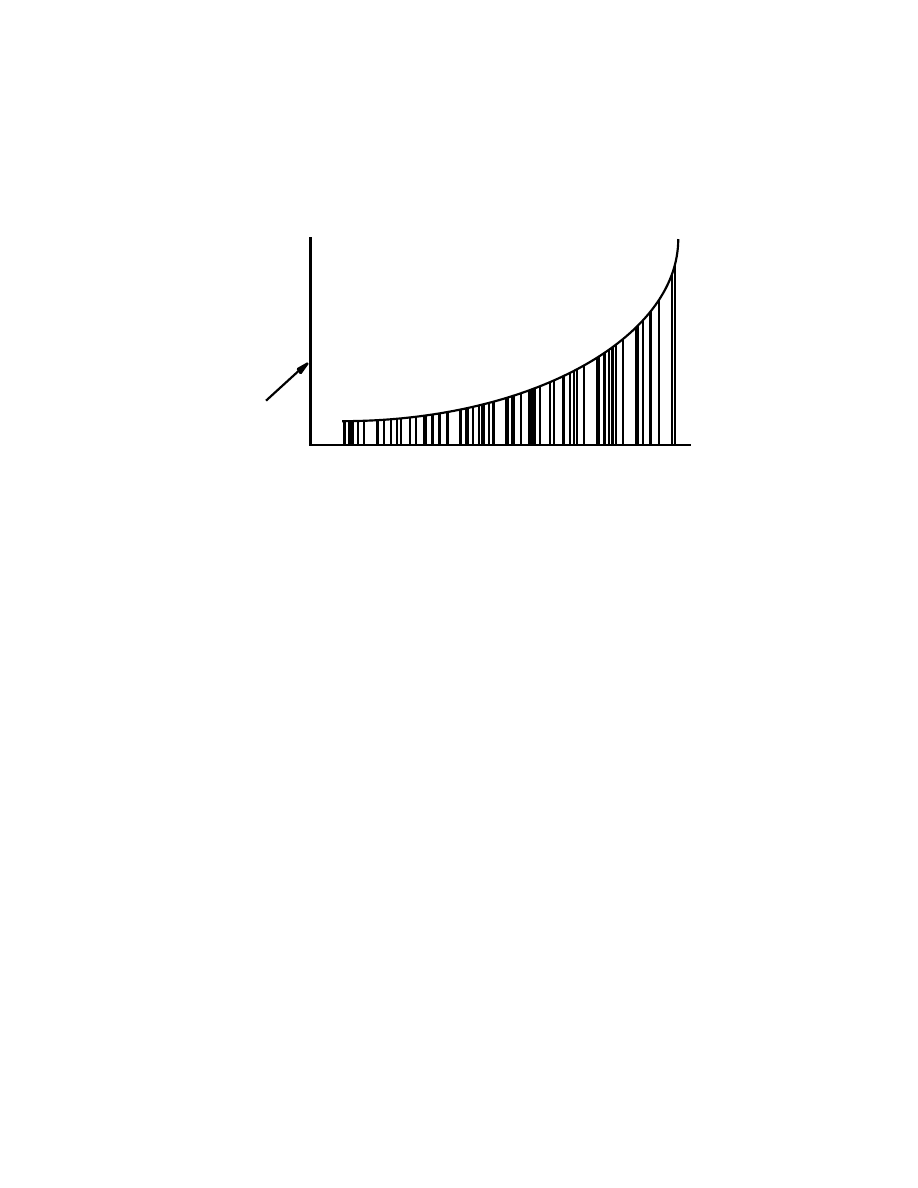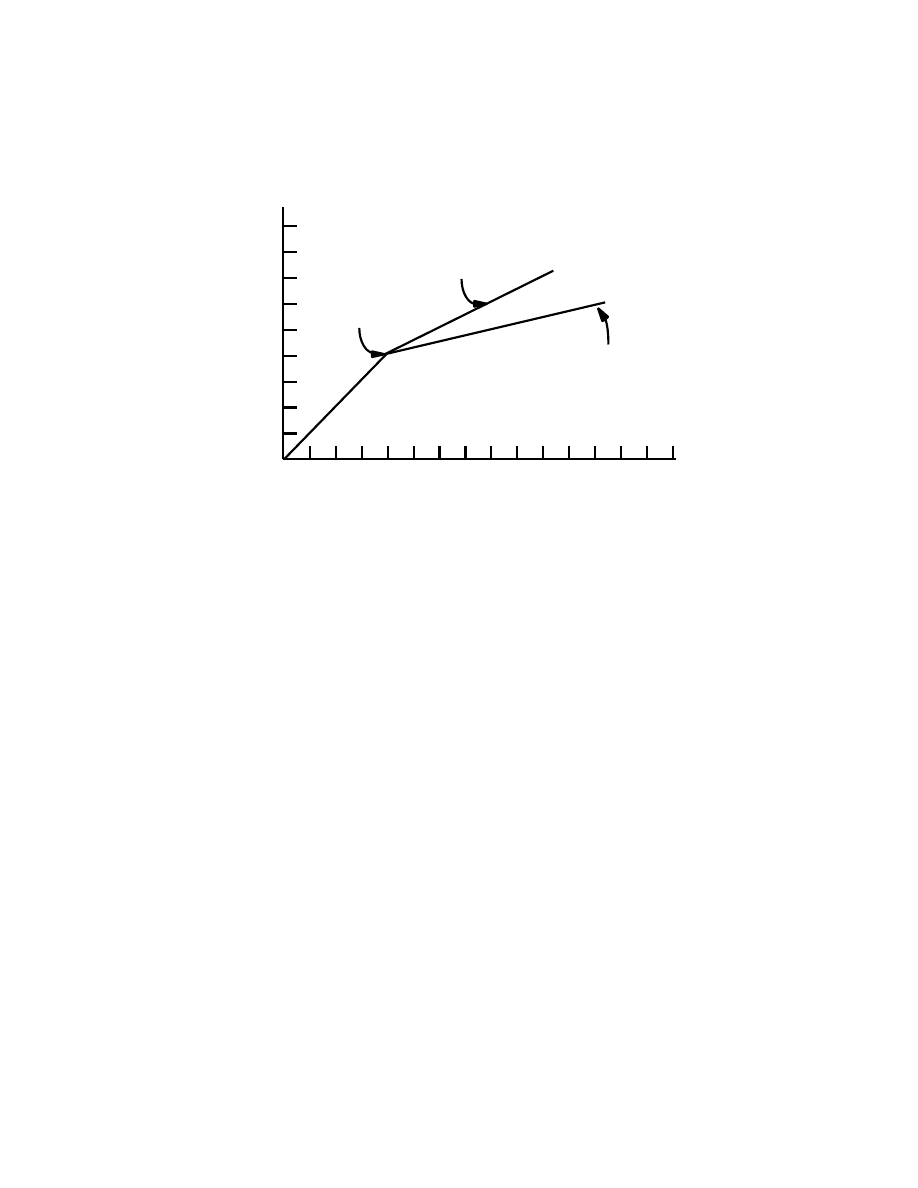ВУЗ: Казахская Национальная Академия Искусств им. Т. Жургенова
Категория: Учебное пособие
Дисциплина: Не указана
Добавлен: 03.02.2019
Просмотров: 12338
Скачиваний: 6

R
reverse reverberation: A digitally simulated effect whereby a sound envelope is created by
the usual attack, release, and sustain stages, but the decay portion of the envelope is purposely
reversed so that the reverberant sound increases in amplitude, rather than naturally decreas-
ing.
Amplitude
Time
Initial
Delay
| |
Reverse Reverb from a Percussive Sound
Reverse reverb is created by applying
a reverse envelope to conventional
reverberation reflections
Impulse,
such as a
hand-clap
rewind motor: See supply motor.
RFI: Radio Frequency Interference. Caused by radio stations, cellular phones, and other
sources of radio energy that is transmitted through the air, RFI is a common source of induced
noise. See induction, EMI.
RFZ: Reflection Free Zone. For example, hopefully the mix position in a studio. As with the
LEDE school of control room design, both acoustic designs seek to create a room which im-
poses none of its own character upon the audio. As opposed to early sound scattering (ESS)
control room designs.
rhythm: The beat, tempo, measure and meter of the music, plus the variation of beats as they are
superimposed over the main pulse.
rhythm track: Basic tracks usually recorded first in a multitrack session. These are generally
played back for the musicians as a cue mix for dubbing purposes.
RIAA: Recording Industries Association of America. An industry body set up to define stan-
dards and practice in the recording industry. In particular, its internationally accepted stan-
dard for the recording characteristic involving emphasis and de-emphasis for vinyl records. See
also SMDI, RIAJ.

R
RIAA Curve: An equalization curve established by the RIAA and applied to all music as it is
transferred from master tape to master disc. This pre-emphasis curve introduces a 20dB skew in
the frequency content of the program, decreasing the bass content and increasing treble over a
500Hz threshold. The complementary de-emphasis is applied by the phonograph preamplifier
during reproduction. Since groove width increases in proportion to the low-frequency content
of the program, and since vinyl disc surface noise is most noticeable in the high frequencies,
the RIAA curve is designed to enable more dense program recording while minimizing the ef-
fect of surface noise.
RIAJ: Record Industry Association of Japan. The Japanese equivalent of the RIAA.
ribbon microphone: A type of dynamic microphone which has a thin metal foil, or ribbon, sus-
pended in a magnetic field. Sound waves vibrate the ribbon in the field and generate an elec-
trical signal. Ribbon mics are usually quite fragile, but are used for their warm, smooth tone
quality. They work well with digital recording and on brass instruments to mellow the tone.
Ribbon mics are either figure-eight or cardioid. See also condenser microphone.
ribbon tweeter: A high-frequency loudspeaker. The audio signal is connected to the ribbon,
which is a very thin (usually aluminum) strip suspended in a magnetic field. The current in
the ribbon establishes another magnetic field, causing the ribbon to move in synchrony with
the input signal waveform, hence, is a direct radiator of sound. Ribbon tweeters are effective at
very high frequencies, and usually require a step-down transformer because of the very low
impedance of the ribbon.
riff: A short, catchy musical phrase usually played between lyric lines in a song, often repeti-
tively, thereby acting as a hook.
RIFF: Resource Interchange File Format. A file specification adopted jointly by Microsoft and
IBM for multimedia sound applications.
rifle microphone: See gun microphone.
ringing: Any device, electronic or mechanical, is said to ring if it continues to produce a signal
or to move after its input is stopped. Ringing, a type of transient distortion, is caused by too lit-
tle damping, and is particularly prevalent in audio transducers. Low-frequency ringing is called
hangover.
ring modulator: A special type of timbre modifier module that accepts two signals as audio
inputs and produces their sum and difference tones at its output, but does not pass on the fre-
quencies found in the original signals themselves. This greatly increases the number of har-
monics contained in the two sounds and introduces a gross nonlinearity, causing huge
amounts of harmonic and intermodulation distortion. The ring modulator is used in the genera-
tion of electronic music, usually in conjunction with a lowpass filter which reduces the high-
frequency roughness of the resulting metallic sound. It gets its name from its circuit configu-
ration which is a circle, or ring, of four diodes. See also oscillator sync.
ripping: The process of extracting samples from MOD files for use in digital compositions.
ripple: (1) Irregularities in the frequency response of a filter which has a nominally flat response
in its passband, or (2) irregularity in the value of DC voltage in a power supply which manifests
itself as hum in the loudspeakers.

R
RMS: Root Mean Square. A formula for describing the level of a signal. RMS is derived by
squaring all of the instantaneous voltages along a waveform, averaging the squared values,
and taking the square root of that number. For sine-like signals,
average power = RMS(voltage)
×
RMS(current)
The voltage of an audio signal is usually measured in terms of the RMS value of the signal.
The RMS value of an alternating current produces the same heating effect in a circuit as the
same value of a direct current.
Robinson-Dadson curves: See equal loudness curves.
rock and roll: A system used in dubbing or mixing by which the projector, dubbers, and re-
corder can run in synchronization in reverse. Thus, if a mistake is made in mixing a particular
section, all sources can be rolled back past the mistake, and a new take can be punched-in be-
fore the mistake. Also called rollback. Selsyn motors on all machines involved are required to
make rock and roll possible.
rollback: (1) See rock and roll. (2) On video recording/editing systems, the rollback, or RLB,
function is used to rewind machines by a predetermined amount from the current position.
The default rollback time is 15 seconds.
rolloff: (1) The difference between the input amplitude and the output amplitude in a filter
over a specified frequency band, expressed in dB. (2) See rolloff filter, rolloff slope.
rolloff filter: A filter which has a reduced output as the frequency is increased is called a rol-
loff filter. A tone control is a rolloff filter when turned down. Sometimes the attenuated por-
tion of the frequency content of the signal itself is called rolloff. A circuit that attenuates a sig-
nal that is above (lowpass) or below (highpass) at specified frequencies. For example, micro-
phones usually have a bass rolloff filter to remove wind noise and/or excessive breath pops.
rolloff frequency: The frequency above or below which a filter begins to filter out the har-
monics of the waveform. As the rolloff frequency is raised or lowered, more of the harmonics of
the sound will be filtered out. Specifically, the frequency at which the response of an equalizer
or other audio device is reduced by 3dB, and can refer to both lowpass and highpass response
curves. The rolloff frequencies of an amplifier are the frequencies where the output voltage
drops to 0.707 of the middle range output. A decrease of the voltage by a factor of 0.707 is
equivalent to -3dB, so these critical frequencies are often referred to as the 3dB down points.
Also called cutoff frequency, critical frequency, or the half-power point. Moving the rolloff fre-
quency in real-time will produce a wow effect, which can be accentuated by increasing the filter
resonance level.
rolloff slope: The acuity of a filter’s rolloff frequency. Rolloff is generally measured in
dB/octave. A shallow slope, such as 6dB per octave, allows some frequency components be-
yond the rolloff frequency to be heard, but at a reduced volume. When the rolloff slope is
steep (on the order of 24dB/octave), frequency components very close to the rolloff frequency
are reduced in volume so much that they fall below the threshold of audibility. Rolloff slopes
are sometimes called skirts. See filter, pole, sharp(2).

R
room equalization: The alteration of the frequency response of signals that will be sent to
speakers or monitors, done in order to compensate for room modes. These problems are gener-
ally identified by sending pink noise to the speakers, then adjusting the frequency response of
the resulting sound that arrives at the listening position. Most room EQ references use
1
3
-
octave 31-band graphic equalizer, with additional over-all bass and treble adjustments. See
also RTA. Also called voicing.
room mode: Also called standing waves, room modes come in three types: axial, along the axes
of a room (front to back, side to side, floor to ceiling); tangential, or any two pairs of opposite
surfaces; and, oblique modes which are the product of the reflections of all six surfaces. To
calculate the frequency of a particular mode,
f
c
2
n
x
L
x
2
n
y
L
y
2
n
z
L
z
2
Where f is in Hertz, c is the speed of sound (1130 ft./sec. or 344 meters/sec.), L is the room di-
mension, and n is the order of the mode. It’s not important to know the frequencies of the
room mode, just how evenly spaced they are. If they are not uniformly distributed, the room
will show a response peak where they are nearly coincident. The most problematic frequency
range is 50Hz-150Hz. The golden ratios of height to width to length are: 1.14:1.39:1 or
1.28:1.54:1 or 1.60:2.33:1 (Bolt’s golden ratios), then the modes will be perfectly spaced and
low-frequency response is smooth by design. See also standing wave.
room sound: The characteristic ambient sound of a concert hall or other listening space.
room tone: The ambient noise of a room, set or location where dialog is recorded for the pro-
duction shoot. Usually recorded as wild sound, room tone is used by film and dialog editors
as a bed to form a continuous tone through a particular scene. Not to be confused with ambi-
ence, which can be sound effects and/or reverberation added when the dialog is mixed. See
also NC Curve, walla.
root: The lowest note of an uninverted chord, and therefore the note which usually gives the
chord its name. For example, in a triad, it is the lowest note when the chord is arranged as two
thirds on top of one another: C is the root of the chord of C (C, E, and G), an arrangement
known as root position. If the root is not the lowest note, the triad is said to be inverted.
root mean square: See RMS.
rotary head: The video recording system that uses a rotating drum carrying two or more
heads which sweep across the tape at a small angle, typically 5˚-8˚. This allows a high rate of
scanning to be combined with a low tape speed.

R
rotation point: In a compressor or expander, the input signal level at which the graph of the de-
vice’s transfer characteristic intersects its unity gain curve. At this level, there is no net change
from input to output level.
Output Level
Input Level
Rotation Point
2:1 Compression Ratio
4:1 Compression Ratio
0dB
Rotation Point
rough cut: A stage in the editing of the workprint or videotape at which the scenes and shots
are in order and cut approximately to their correct length, between an assembly and a fine cut.
See copy editing.
rough mix: A mix of a recording in progress, either as it occurs or, in the particular case of a
stereo mixdown of a multitrack recording, one made at the end of a day’s work for overnight
audition.
routing: (1) (verb) The process of directing a signal from one point to another. (2) (noun) The
pathway a signal takes, e.g., through which busses it passes on a mixing desk.
Rt: See stereo optical print.
RT-60: The reverberation time of a space. Suggested times for various room volumes are:
Room Vol. (
10
3
cu.ft.) Range of RT-60 Times (seconds)
1-2
0.3-0.4
2-3
0.3-0.55
3-5
0.4-0.65
5-7
0.45-0.7
7-10
0.5-0.75
10-15
0.55-0.8
15-20
0.65-0.9